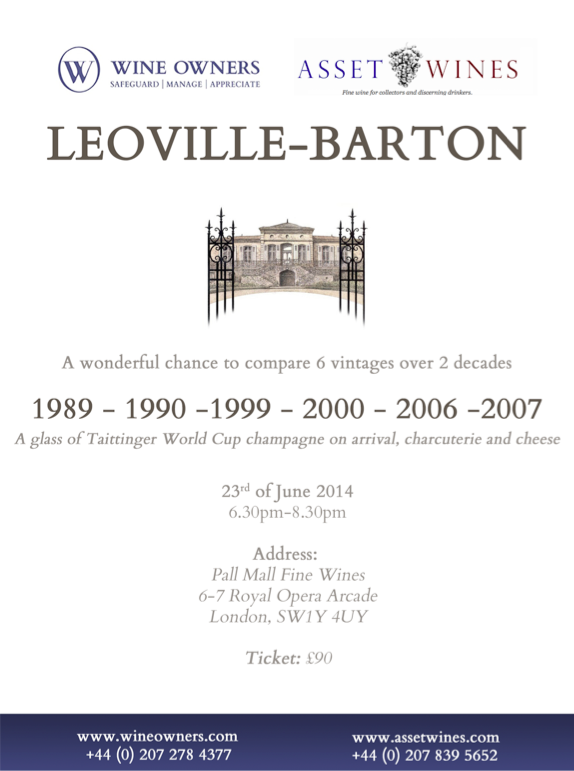by Wine Owners
Posted on 2018-10-16
We had the pleasure to share a wonderful Chateau Margaux dinner with our members and the estate's ambassador Thibault Pontallier at La Trompette last week. The line up encompassed Chateau Margaux 1983, 1986, 1989, 1990, 1996, 1999, 2004, and a surprise magnum of 2000, preceded by Pavillon Blanc 2015 and Pavillon Rouge 2000 and 2009.
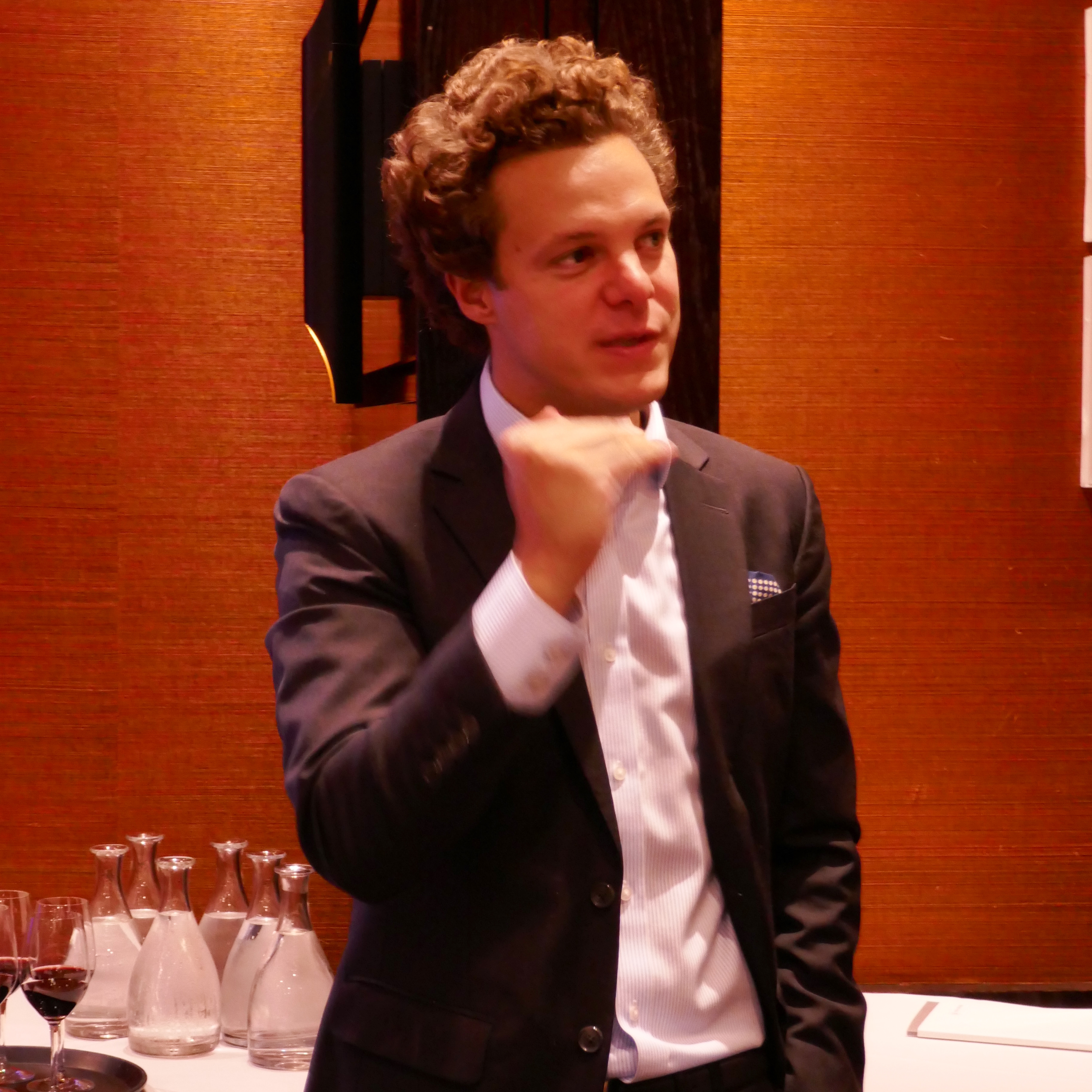
Pavillon Blanc 2015
Mineral nose, chalky, white currants, and saline. In other words a lot going on! Bright attack, palate follows the profile of the nose with addition of seville oranges and attractively bitter pith, green guava, and a fruit bush leafiness before ending on a firm finish.
2022-2030
94
Wine Owners view
A great investment in future drinking - one of the most complex of white Bordeaux, with refinement and structure for the long haul, and will be impossible to find in the future.
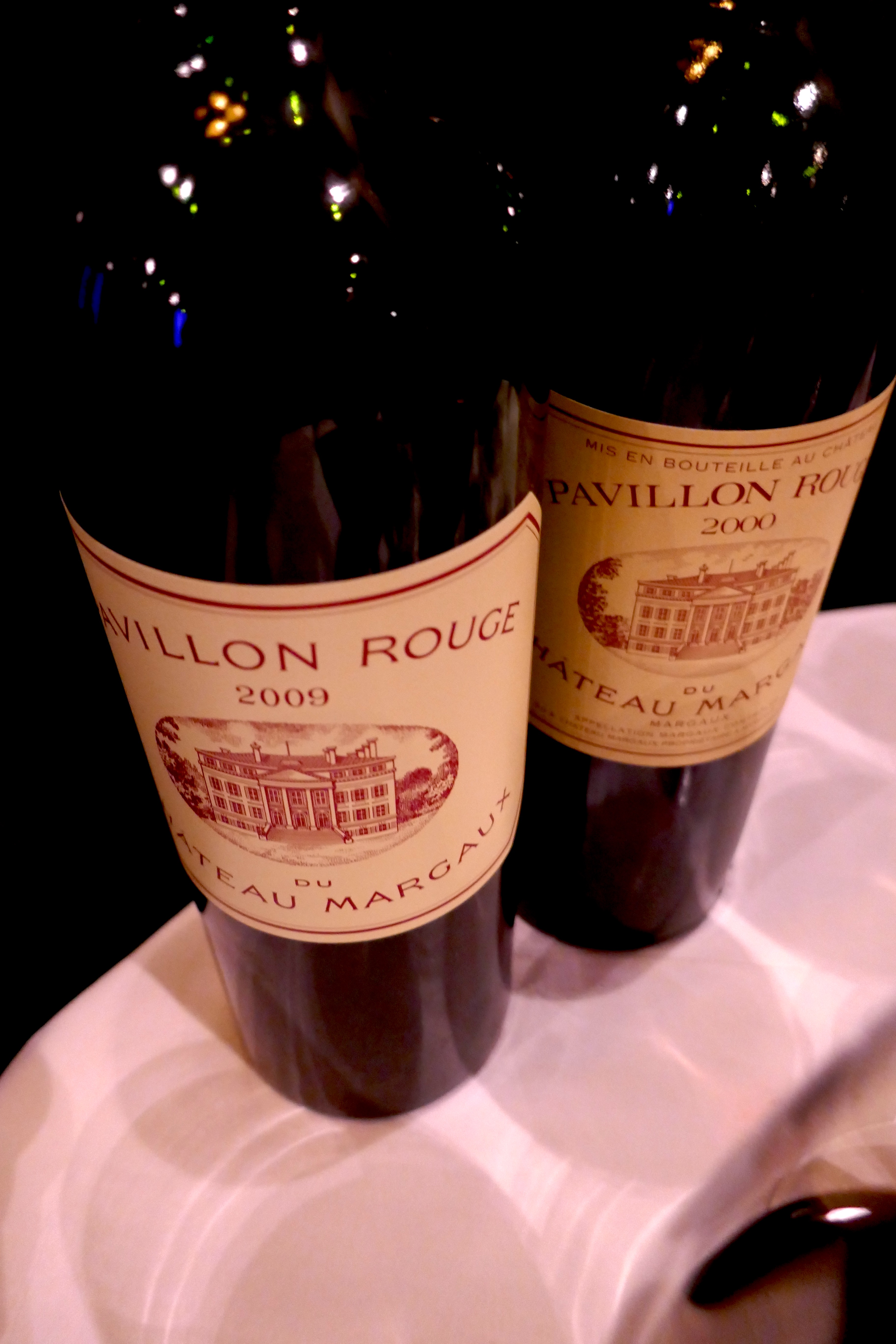
Pavillon Rouge 2009
A controlled, spicy nose, intense cassis, fresh blackcurrant leaf. Surprisingly cool from such a warm vintage, great grain to the wine’s texture, full of future promise, with depth and focus.
2023-2035
93+
Wine Owners view
Hitting the level of a second growth, Pavillon rouge is a grand wine in 2009, more expressive than the Grand Vin at this stage, yet with the same sense of balance and poise. Chip off the old block.
Pavillon Rouge 2000
Complex pine infused nose. Dry aromatic attack, gorgeous definition and a fine persistence. A touch of gaminess, roses, and spruce tips on the mid palate, the fruit evolving into a broad savoury finish enlivened with sappy, uplifting acidity.
Now to 2025
95
Wine Owners view
Mature and exciting with lots of complexity within which it’s easy to pick out individual flavours. So plenty of wine to make a special occasion a bit more special.
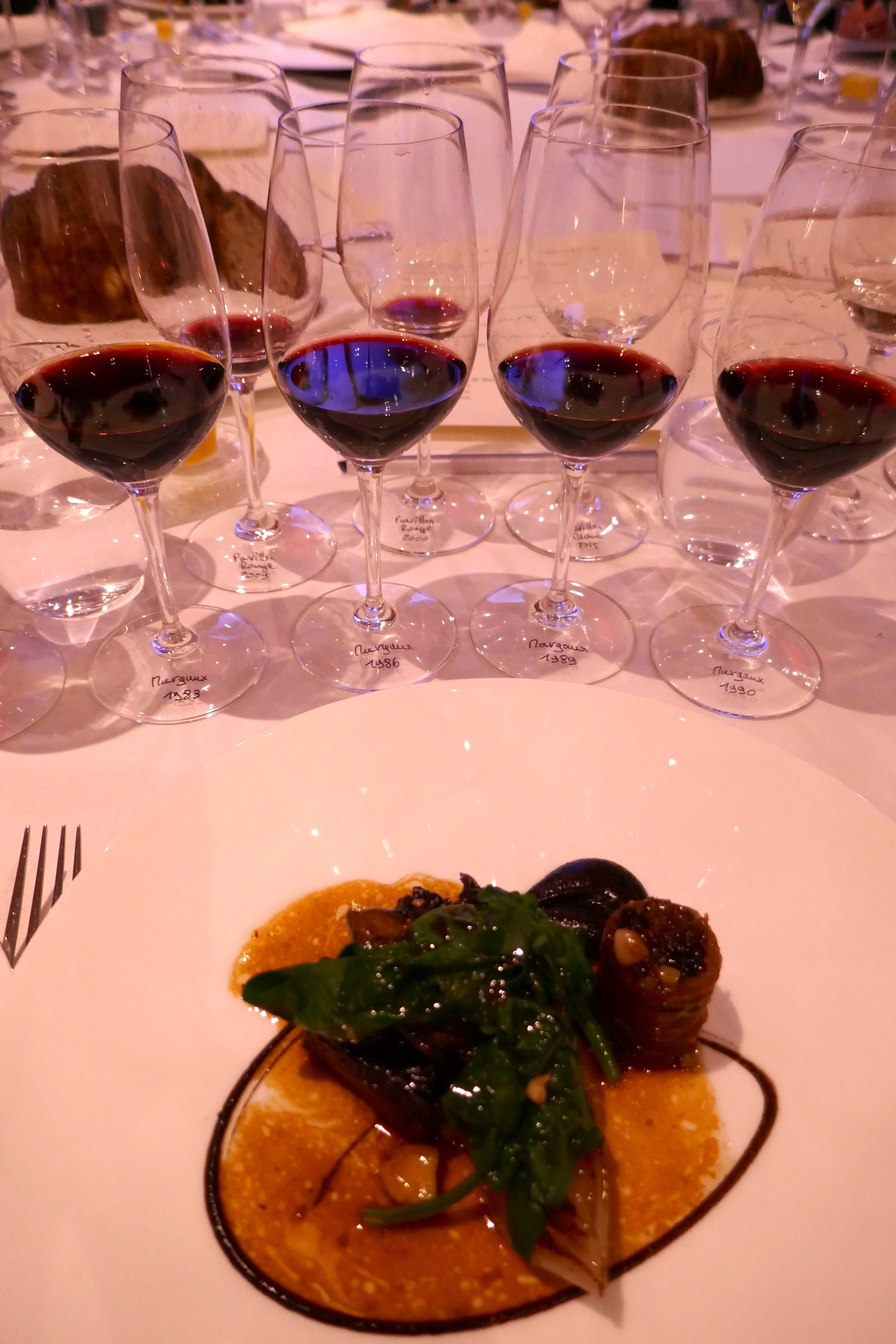
Margaux 1983
Aromatically expressive, a spiced attack preludes a charming medium-weight classic claret of supreme elegance and harmony. A gentle finish that nevertheless remains very elegant and delightfully complete.
Now to 2023
93
Wine Owners view
A great drink for right now, majoring on Margaux’s famed subtlety. Still possible to find in the secondary market around £350-£400 per bottle, which given its age and refinement is something of a steal. Hard to think of better First Growth value for money.
Margaux 1986
Heady, spiced, with a touch of iodine creating an intoxicating blend. Resolved on the palate, very good intensity allied to racy acidity. Fine scale with oranges and cloves on the long finish.
Now to 2025
95
Wine Owners view
1986 was a happy surprise due to the energy and resonance of the vintage. We wouldn’t keep it much longer but another strong buy for drinking around £400 per bottle.
Margaux 1989
Gorgeous overt nose, great length and grain, sappy with rising aromatics, a twist of liquorice and a cloved finish.
2020-2035
94+
Wine Owners view
The generosity of the vintage is evident on the nose, yet the accomplishments of this wine are still hidden, and there’s a sense of more to come. That grainy texture and gorgeous spiced finish are surely harbingers of great things in store for future drinking. As a result, a decent investment to boot for a 10 year view.
Margaux 1990
Saline, gamey nose and an energetic and velvet-textured attack, counter-balanced and infused with blood orange. Great resonance and breadth, visceral, spiced finish, and a whiff of very attractive sweet chloroform right at the finish. Very, very long. A great wine.
Now to 2030
98+
Wine Owners view
The velour and silky density of this wine makes it a beauty for enjoyment right now, and sure enough it was wine of the night for the majority of attendees. There’s more to go but will it ever be as lovely as it is now? Expect to pay £720+ per bottle so one for the collector who is looking for the very best vintages of Margaux.
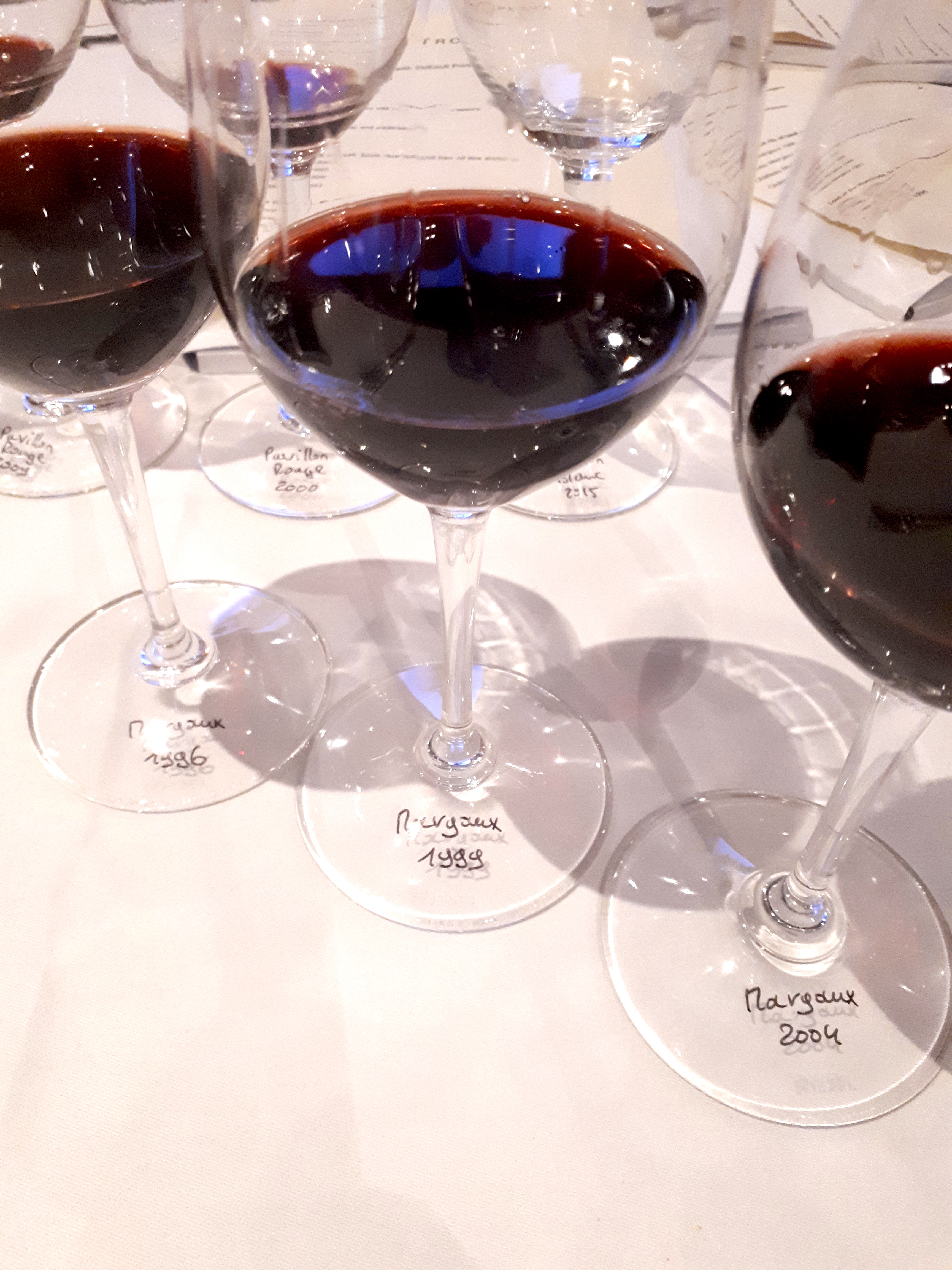
Margaux 1996
Svelte Nose, and then at the outset, so young and fresh. Tannins still present. A large scaled, monumental wine of extraordinary length yet extremely primary. An absolute baby in other words! With time in the glass the aromatics really open up. There is great intensity and a wonderful centre to this wine. Tonight 1990 gives more pleasure, but the sense of energy and drive in this wine along with all the other elements suggest a great, great Margaux in the making for 2025 onwards.
2025-2050
Wine Owners view
This is going to be mind-bendingly good. Though it lacks the resolution and some of the warmth of the 1990, it makes up for that in sheer energy, focus and intensity in its core. This elemental wine is still good value at around £500+ per bottle and would be an obvious choice as an investment, or buy now and wait 15 years to for a thrilling vinous experience as close as any gets to a concept of the perfect wine.
100
Margaux 2000 (Magnum)
A wine that is already resolved but at the beginning of its plateau. Spiced, cloves, sweet chloroform. Great energy, definition and depth on the finish, enlivened by a fine thread of acidity that uplifts the fruit. Very long and all the while gaining in energy through the impressive finish.
2018-2033
97
Wine Owners view
The overriding sense one has here is of harmony. Balanced and complete, spiced and heady with the signs of further maturity a short few years away. For many palates this is completely ready but an interesting addition to any Bordeaux lover’s cellar for its immediacy and near term potential.
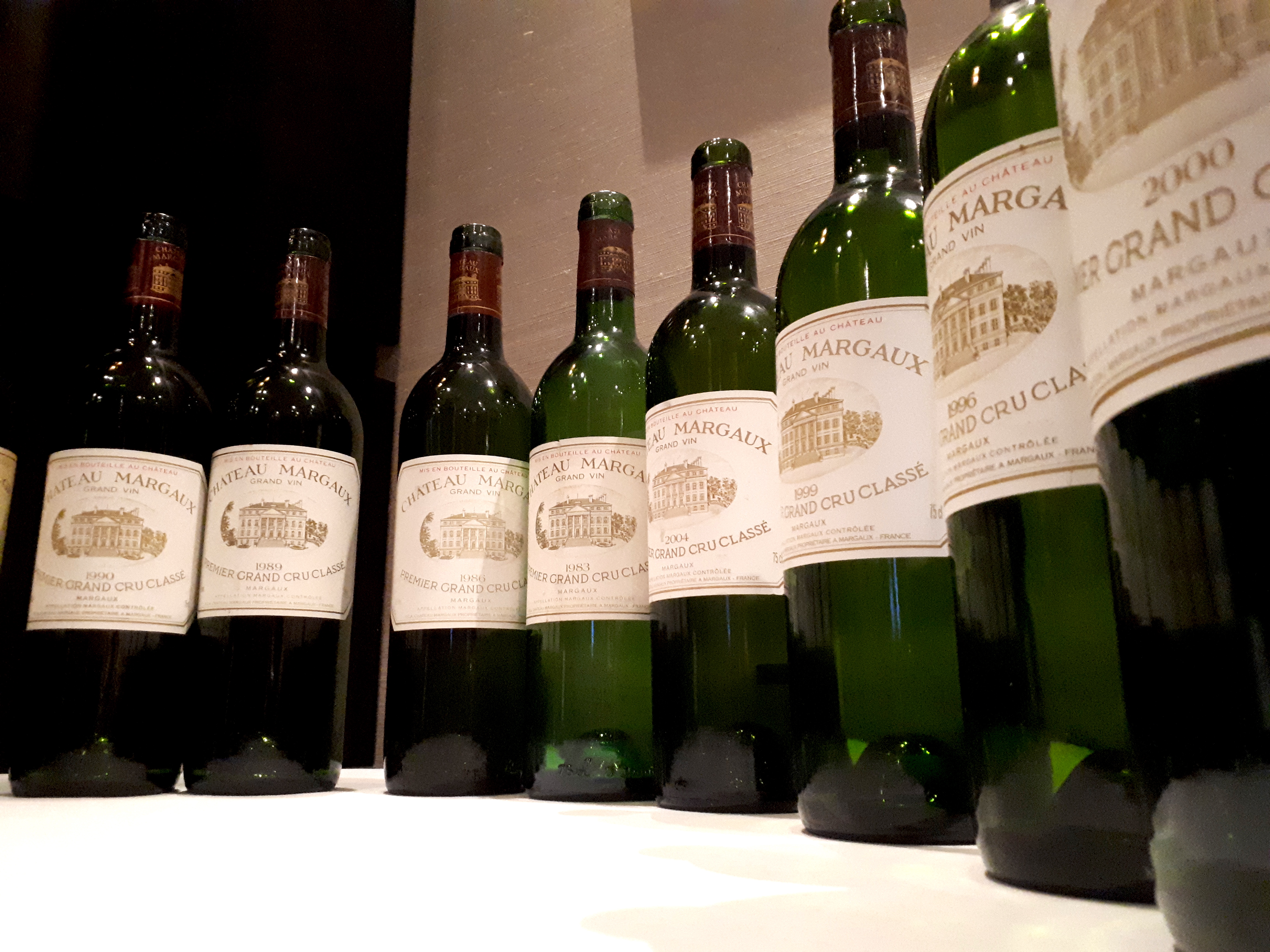
by Wine Owners
Posted on 2017-10-26
What a treat to welcome Matthieu Bordes to a Lagrange dinner in London, with a full house of Wine Owners’ enthusiasts around the table.
Matthieu was subsequently described by one member in attendance as ‘informative, congenial and charming’. His passion for Lagrange shone through. Matthieu is both boss (Directeur Générale) and the wine maker since 2013, the year that extensive modernisations were also made to their wine-making facilities.
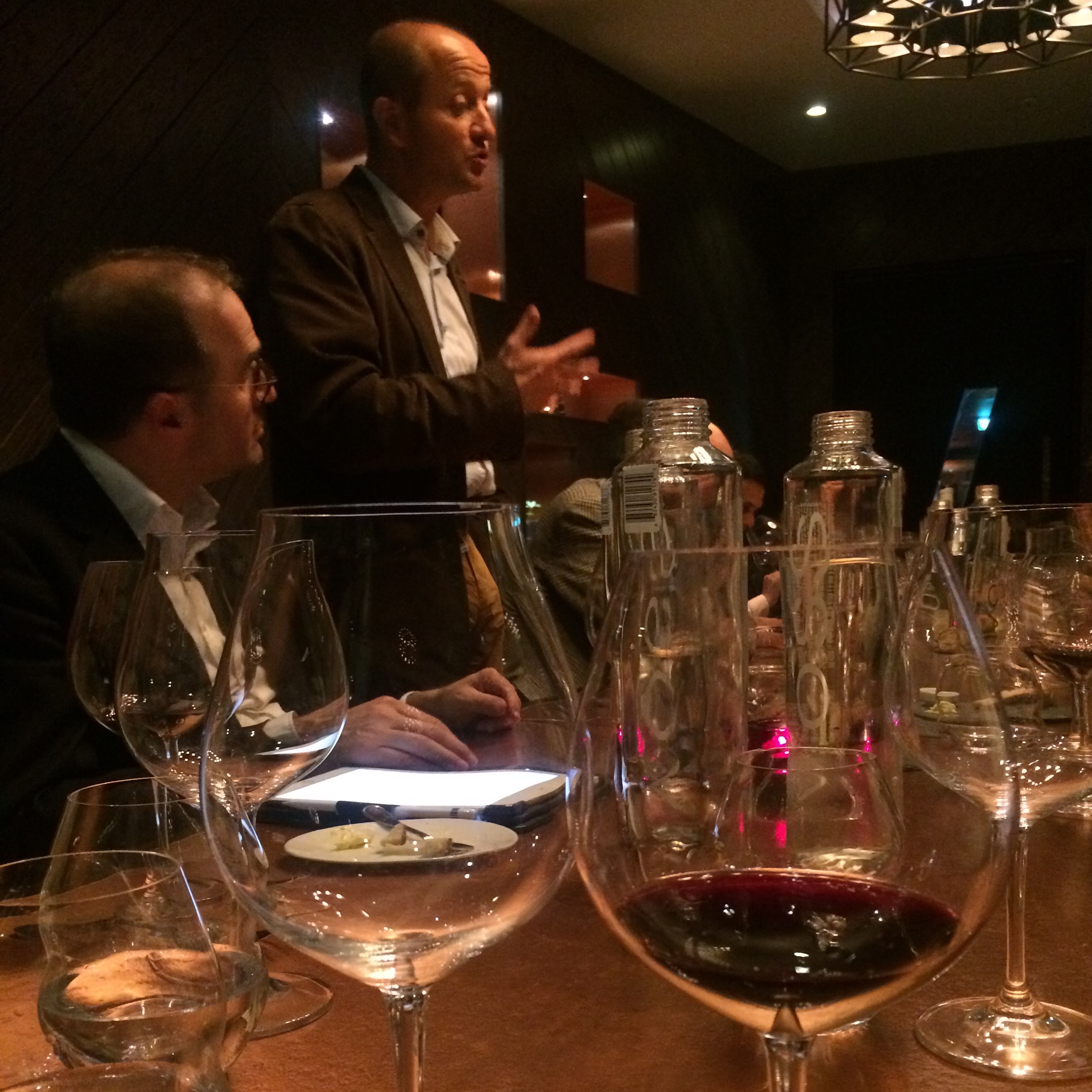
Chateau Lagrange is an unmorcelated parcel to the west of the commune of St Julien, classified as a 3rd Growth in 1855. Owned by Japanese beverage giant Suntory, it’s very much run with a free hand by the local management team.
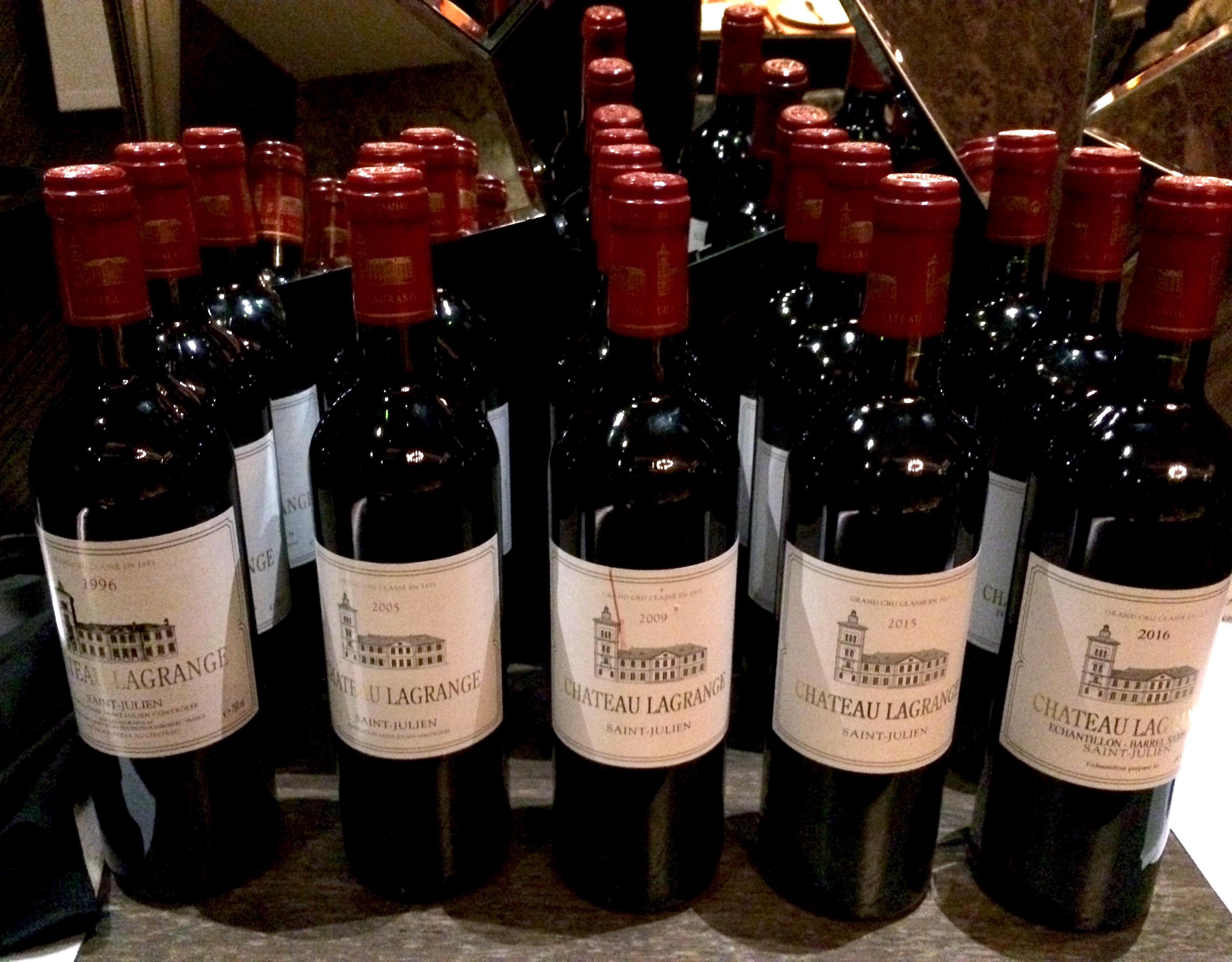
Arums de Lagrange 2016
The tasting kicked off with the estate’s white wine, Les Arums de Lagrange 2016, comprising sauvignon blanc, semillon and a dollop of muscadelle. Arum is a form of hardy lily, and the name is aptly chosen. Les Arums is delightful with a delicate nose and very attractive purity. There’s no trace no heaviness, nor any overt cépage character, due to the gentle handling of the fruit and a balance between barrel fermentation and a period of élevage in steel. It’s drinking beautifully already: there’s clarity to the fruit underpinned by appealing freshness. No need for a Coravin with this one; it’s too tempting to drink the whole bottle!
Chateau Lagrange 2015
A fitting guard of honour for the 2016 vintage that followed. There’s a benchmark cedar nose, with warm and inviting fruit. The initial impression on the nose is of a lush wine, yet the attack is firm, and the fruit is beautifully pure – crystalline. There’s impressive intensity, but at present without the sense of coiled energy of the greatest vintages. Nevertheless this will drink well moderately young, with its warm and inviting nature unlikely to turn taciturn. Very impressive given it had only recently been bottled, a time when wines can pass through an unsociable teenage phase. We wouldn’t be surprised if this gained much more length with time.
Chateau Lagrange 2016
Unsurprisingly with a barrel sample, the nose is on the 2016 is un-evolved, with primary, juicy fruit to the fore. The initial impression at first sip is that the wine is elegant and of medium weight, with a mild savoury streak adding interest. This is an insinuating wine though, whose accomplishments and embellishments become apparent progressively with time in the glass. The tannins are so ripe and silky that their velvety texture cloaks a very considerable underlying structure to the fruit. IPT levels were rather high within the best sectors in 2016, essentially a measure of tannin and colorant from skins, pips and vegetal matter. That substance is very much in evidence chez Lagrange, with a delightful balance that suggests great class. Magnificent.
Chateau Lagrange 2005
We’ve always been fans of those 2005s where the wine making wasn’t unduly extracted, and this Lagrange ticks that box. There’s a dusting of white pepper on the nose, with a blast of kirsch and liquorice. The attack is sweetly fruited, with black ripe cherry dominating the mid palate, and a liqueur-like texture. The finish is heady and visceral. A soulful wine, and very well balanced too. Destined to drink sooner than some other 2005s but with the wherewithal to sustain a long drinking window.
Chateau Lagrange 2009
The nose is extremely fruity yet somehow delivers an impression of being very well integrated. There is enormous intensity to the 2009, with cloves, liquorice, chocolate and blackcurrants, wrapped up in a beautiful texture. The ripeness of the tannins is defining, providing a structure and focus to a bold wine. 27% Merlot, 63% Cabernet Sauvignon. This will need a number of years to properly resolve, by which time the evidently exotic bouquet and textured palate should ensure it develops into a wine reminiscent of 1982 St Juliens.
Chateau Lagrange 1996
Shifting away from young wines with a long life ahead, the 1996 surprised with its maturity. The nose is gamey, with leather notes, and savoury aromatics of smoked meat and sweet wood scents. On the palate there’s a satisfying depth to the wine, in common with other successful 1996s, yet with less noticeable acidity at this stage of evolution than many other top crus classés. Cloves, liquorice and blond tobacco dominate the mid palate before an attractive finish. The freshness of the vintage is seamlessly resolved into the whole. There’s a significant 7% of Petit Verdot in the blend that salt and peppers the 57% Cabernet Sauvignon and 27% Merlot. This is a success offering good value drinking now. If you haven’t already decided on the wine to serve with the Turkey, duck or goose this Christmas, look no further.
by Wine Owners
Posted on 2016-10-17
Guests gathered for a rather special evening of rare, older Rioja vintages at the Portland restaurant, a one-star Michelin restaurant serving food in an informal style of family-service.
The plates were delicious, and although a couple of the starters - buttermilk and smoked cod’s roe - worried the table in light of the venerable bottles, there was no arguing with the deliciousness of every plate served. The main course of beef was simply outstanding, served with melt-in-the-mouth heritage carrots and brown buttered cauliflower.
The wines were opened 90 minutes in advance, and with so many crumbling corks, insecurity got the better of us and we held off decanting until the last minute in most cases.
Starter course 1
Ygay Etiqueta Blanca 1970
2 bottles were served, one of which opened with a musty nose, the other was much more energetic with purer character.
It’s always worth leaving old bones some time in the glass to recover from the shock of opening, and sure enough, the musty character blew off, but without the zest and purity of the second bottle.
Marques de Murrieta Castillo Ygay Rioja Gran Reserva Especial 1970
By comparison the Castillo Ygay, bottled we think in the late 1990s or 2000s, and with a fresh cork to prove it, seemed rather clunky and thick. It was as if the extended barrel ageing has rubbed out its finer lines, leaving it smudged.
There was no arguing with the richer fruit, but where was the definition or class?
Starter course 2
Berberana Rioja Gran Reserva 1950
From a private cellar in Richmond, this wine was served from a decanter, having been filtered through muslin to strain a few pieces of crumbly cork that the operator of the Westmark cork puller had failed to pull out cleanly.
Arguably the star of the show, this ethereal wine showed intensity allied to a sense of weightlessness. It improved in the decanter over 2 hours and wowed the entire table.
Rioja GR Honorable Gomez Cruzado 1964
Similarly to the Ygay Etiqueta Blanca, a dustiness blew off with time in the glass to reveal pear drops and an earthy, more savoury character.
Bodegas Bilbainas 1964
Fruity and balanced with an alluring freshness and utterly delicious. A surprise since no one had encountered the producer. One to seek out and is very good value.
Main course
Vina Real CVNE 1964
This was the other wine that vied for wine of the night along with the Berberana.
Energetic, deep and pure. Burgundian texture with a brilliant complexity of fruit that carried though into a long and deeply satisfying finish.
CVNE Imperial Gran Reserva 1964
An absolute dog of a bottle, sadly. Devil’s juice.
Rioja Alta 904 Reserva 1964
A comparatively rich fruit profile on this wine compared to the other wines of the flight, but perhaps somewhat lacking in definition if we were to be critical. This less developed – perhaps worth revisiting in the future?
Cheeseboard
Corral Reserva 1987
Perhaps a touch of rusticity here, but with plenty to like, with a pungent, rose petal quality to the nose.
Corral Reserva 1991
Richer and less evolved than the 1987, this made an interesting comparison. Tasted on its own this would no doubt have seemed excellent, but slightly overshadowed by the context here I fear.
Plus a mystery wine served blind – 1988 Valbuena 5
Elegant and pleasantly evolved with remarkable balance between richness of the Douro fruit and a dry, firm structure reminiscent of cool climate claret, even down to a persistent saline note on the palate lending freshness. Certainly supports the reputation of the producer.
What we learned
1. The dinner challenged the blanket reputation of 1964 as immortal - it isn’t. Delicious though several were, they are not destined to remain so.
2. A common understanding is that Gran Reserva is better than Reserva, that is better than Consecha. Price follows the length of description it seems. Based on this tasting, the length of time aged in wooden vats does not necessarily improve the quality of the wine. The Etiqueta Blanco vs Gran Reserva Especial, both 1970, certainly supports this thinking. Th Etiqueta Blanco was the finer wine, by far.
It doesn’t help that definitions seems to have changed over the years. Our 904 1964 was a Reserva, and possibly all the better for it, whilst other bottlings of the same year are described (in a Bid for Wine auction a year ago) as Gran Reserva. More recent vintages of 904 are described as Gran Reserva.
3. You don’t need to just follow the wines of the biggest Rioja operations, such as Rioja Alta, Marques de Murrieta and CVNE. The least well known producers on this showing delivered very good value for such old wines.
by Wine Owners
Posted on 2014-08-21
Following a long summer break, we’re back into our series of ‘BYO’ tasting dinners where you can share your wine treasures and your unusual purchases with friends and enthusiasts.
Taking a Spanish flavour this time, we’d love to hear from anyone who wants to come along on Tuesday 23rd of September with a bottle of old Rioja, boutique Priorat, or anything weird, wonderful and fun from the Spanish region. Before anyone asks, yes, that certainly includes sherry!
We’ll be eating this time around at Dehesa in Soho, where we can fit in up to 13 guests for a specially prepared menu showcasing the best of modern Spanish cooking.
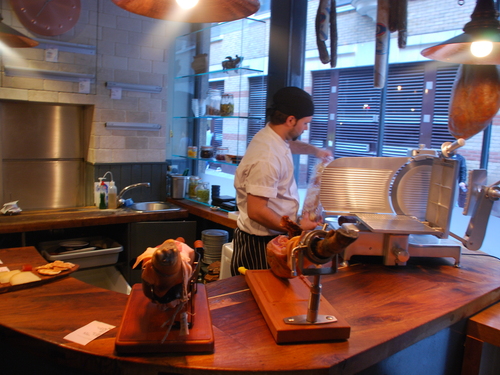
As usual, the Wine Owners Team will be digging out the odd interesting bottle to add to the excitement, including a 1965 bottle of Lopez de Heredia’s iconically old-school Vina Tondonia, and an early vintage of Alejandro Fernadez’s ground breaking Ribera del Duero, Pesquera.
The cost per head will be £90, plus a wine to share with the group.

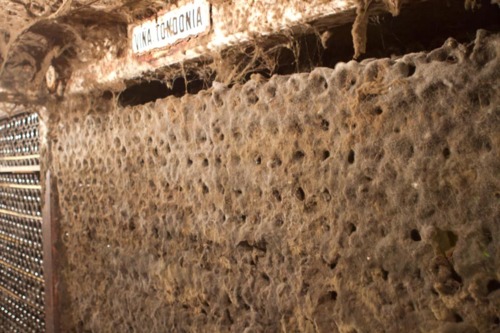
by Wine Owners
Posted on 2014-06-09
